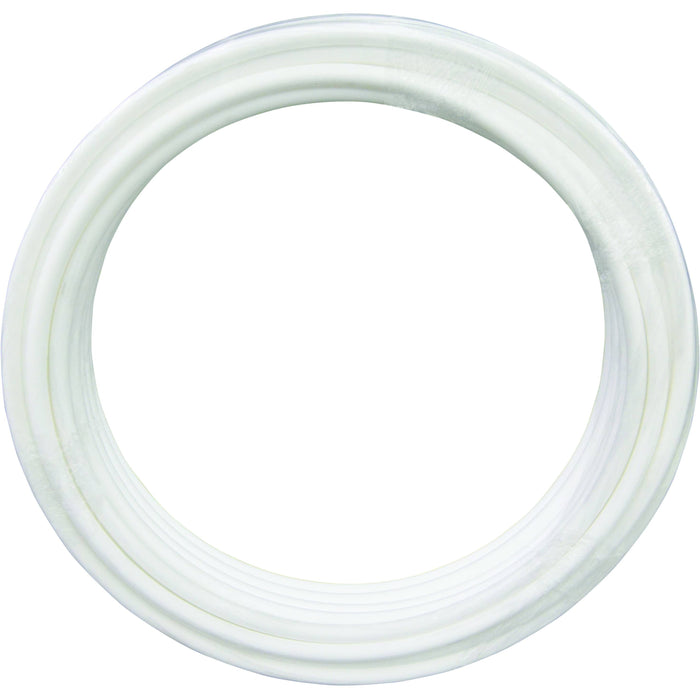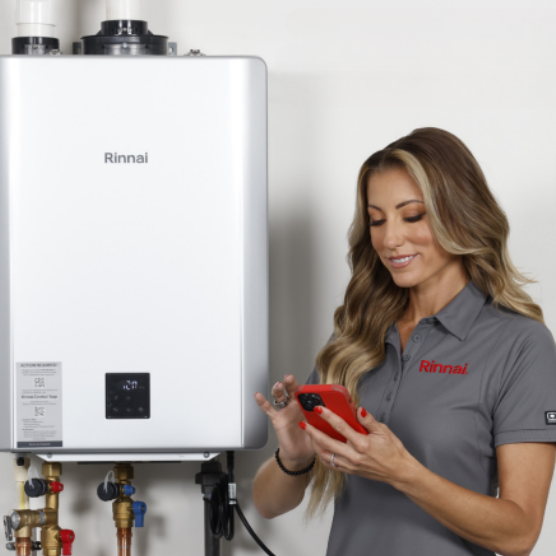

PEX tubing is cross-linked, high-density polyethylene. It’s available in white, red, or blue colors for easy identification of hot and cold water lines.
The silane method, also called the “moisture cure” method, results in PEX-B. In this method, cross-linking is performed in a secondary post-extrusion process, producing cross-links between a cross-linking agent. The process is accelerated with heat and moisture. The cross-linked bonds are formed through silanol condensation between two grafted vinyltrimethoxysilane (VTMS) units, connecting the polyethylene chains with C-C-Si-O-SiC-C bridges.1 PEX tubing is for use in hot and cold potable water distribution systems.
PEX tubing can also be used in “continuously recirculating” plumbing systems up to 140° F while maintaining chlorine resistance. The tubing may be installed in concrete, gypsum based lightweight concrete, sand, asphalt, in or under wood flooring, or behind wallboard or plaster.
Features: • Tough • Flexible • Less expensive than other plumbing materials • Copper tube size dimensions (CTS)
- Type-B Cross-linked Polyethylene
- Approved for use in potable water systems
- ASTM F877-2011a
- CSA B137.5-2009
- NSF/ANSI 66
- Size: 1/2"
- Length: 100'
- O.D.: 0.625±.002
- Nom. I.D.: 0.485
To cut PEX tubing, use a PEX tubing cutter and cut at a 90° angle. Clear the cut end of any burrs or debris. PEX tubing can be run through holes drilled into the center of studs or by using straps and hangers. Bend supports can be used to make bends and angles instead of having to cut the tubing and use fittings. A variety of barb fittings or push type fittings can be used with PEX tubing. Do not expose PEX tubing to direct sunlight. It is recommended to insulate hot water lines with standard foam polyethylene pipe insulation to prevent heat loss. If installing in an area that experiences harsh winters, it’s recommended to insulate both hot and cold water lines to prevent freezing.
Blog posts
-

Leading Hospitality Brands Embrace Zafferano Lighting for Striking and Contemporary Design Impressions
Read nowZafferano America's range of cordless lamps, a favorite of Oprah and Martha Stewart, (Poldina Pro) has earned the distinction of being America's most beloved brand. This acclaim comes from its classic design, the cozy, ambient lighting it offers, and the...
-

How to set up your Rinnai Central Wifi App
Read nowSmart Connect Allows you to connect your smart phone or tablet to the SENSEI® RX Series via Bluetooth®. Use the Rinnai Central™ App for quick, simplified tankless water heater set-up and registration, significantly reducing your install time Accessories Wireless...
-

RINNAI INTRODUCES THEIR PRO BUILD SENSEI RX SERIES
Read nowRinnai Introduces their Pro Build RX Series Tankless Water Heaters, featuring Adaptive Gas Valve Technology that allows for seamless switching between Natural Gas and Propane without the need for a conversion kit. For those considering an outdoor installation, the process...



